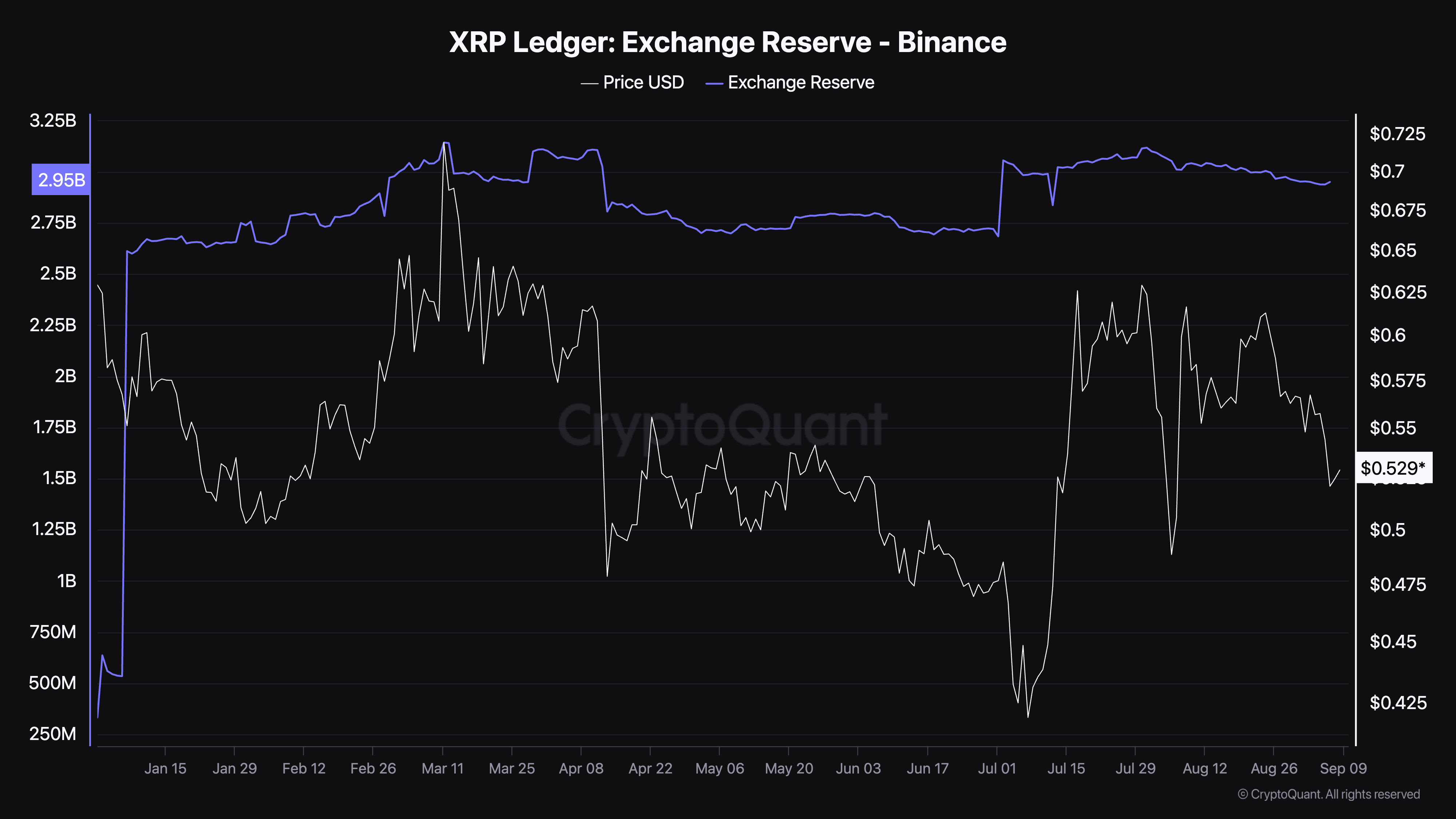XRP reserve on Binance dips by over 160 million in five weeks, what to expect from Ripple
- XRP token reserve on Binance is down 167 million from August through the time of writing.
- Ripple CEO Brad Garlinghouse discussed blockchain technology potential with Japanese lawmaker Taira Masaaki on XRP community day, September 6.
- XRP dips to $0.5289, a slight decline in value on Monday.
Ripple (XRP) reserve on one of the largest crypto exchanges, Binance, declined by 167 million in a time frame of five weeks. This is a key development for XRP holders since a decline in the asset’s reserves on exchanges implies there are fewer XRP tokens to sell. Thus lower selling pressure on the altcoin should ensue.
XRP trades at $0.5289 at the time of writing.
Daily digest market movers: Ripple reserve on Binance dwindles
- Data from crypto intelligence tracker CryptoQuant shows that Binance’s reserves of XRPLedger’s native token dipped by 167 million over the past five weeks — between August 1 and the time of writing.
- Typically, a decline in an asset’s exchange reserves is considered positive since it reduces the available tokens for sale on a crypto exchange platform. This implies lower selling pressure and lower possibility of a negative impact on the asset’s price.

XRPLedger exchange reserve on CryptoQuant
- Ripple CEO Brad Garlinghouse recently met a Japanese lawmaker and spoke about blockchain technology and crypto in Japan on XRP community day, September 6.
- Garlinghouse says that through clear frameworks and constructive policy, Japan could foster innovation in blockchain.
Great to meet Rep @TAIRAMASAAKI in Tokyo this week -- Japan's leaders are committed to advancing crypto and blockchain technology, through clear frameworks and constructive policy that protects consumers and enables innovation. https://t.co/3WPJT05TuO
— Brad Garlinghouse (@bgarlinghouse) September 6, 2024
Technical analysis: XRP could extend losses to $0.50
Ripple is in a multi-month downward trend that started with the altcoin’s decline from the July 13 top of $0.9380. The altcoin could sweep liquidity at $0.5026 and extend losses by nearly 6.28%. XRP could slip to support and the September 6 low for the asset.
The Moving Average Convergence Divergence (MACD), a momentum indicator, shows red histogram bars under the neutral line. This implies there is underlying negative momentum in the XRP price trend.

XRP/USDT daily chart
A daily candlestick close at the upper boundary of the Fair Value Gap (FVG) at $0.5785 could invalidate the bearish thesis. XRP might target this level in a coming rally.
Bitcoin, altcoins, stablecoins FAQs
Bitcoin is the largest cryptocurrency by market capitalization, a virtual currency designed to serve as money. This form of payment cannot be controlled by any one person, group, or entity, which eliminates the need for third-party participation during financial transactions.
Altcoins are any cryptocurrency apart from Bitcoin, but some also regard Ethereum as a non-altcoin because it is from these two cryptocurrencies that forking happens. If this is true, then Litecoin is the first altcoin, forked from the Bitcoin protocol and, therefore, an “improved” version of it.
Stablecoins are cryptocurrencies designed to have a stable price, with their value backed by a reserve of the asset it represents. To achieve this, the value of any one stablecoin is pegged to a commodity or financial instrument, such as the US Dollar (USD), with its supply regulated by an algorithm or demand. The main goal of stablecoins is to provide an on/off-ramp for investors willing to trade and invest in cryptocurrencies. Stablecoins also allow investors to store value since cryptocurrencies, in general, are subject to volatility.
Bitcoin dominance is the ratio of Bitcoin's market capitalization to the total market capitalization of all cryptocurrencies combined. It provides a clear picture of Bitcoin’s interest among investors. A high BTC dominance typically happens before and during a bull run, in which investors resort to investing in relatively stable and high market capitalization cryptocurrency like Bitcoin. A drop in BTC dominance usually means that investors are moving their capital and/or profits to altcoins in a quest for higher returns, which usually triggers an explosion of altcoin rallies.

